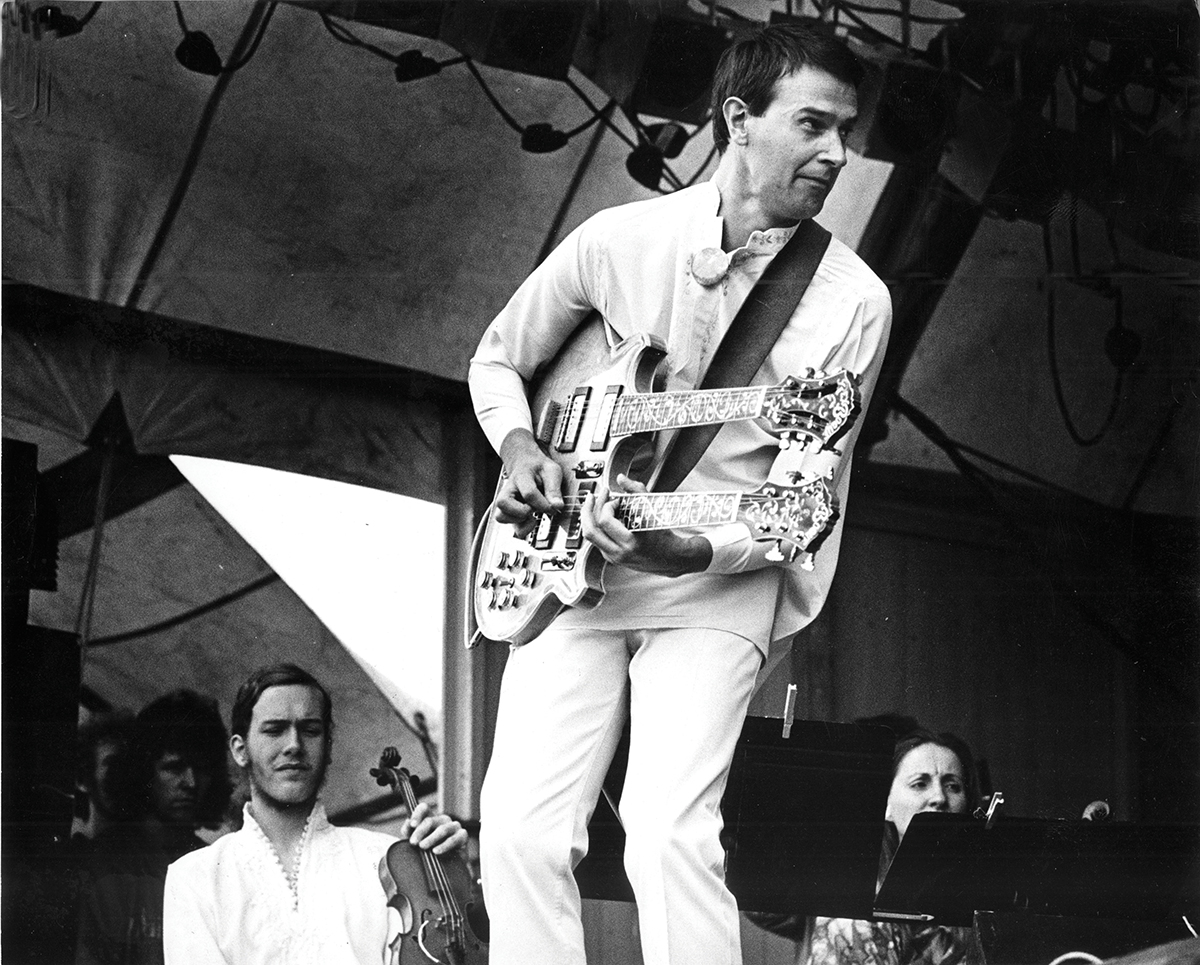Interview: John McLaughlin on how he got started
G&B hears how serendipity played its part in propelling John McLaughlin’s career into the musical stratosphere, alongside legends such as Miles Davis, Jimmy Page and Ginger Baker.
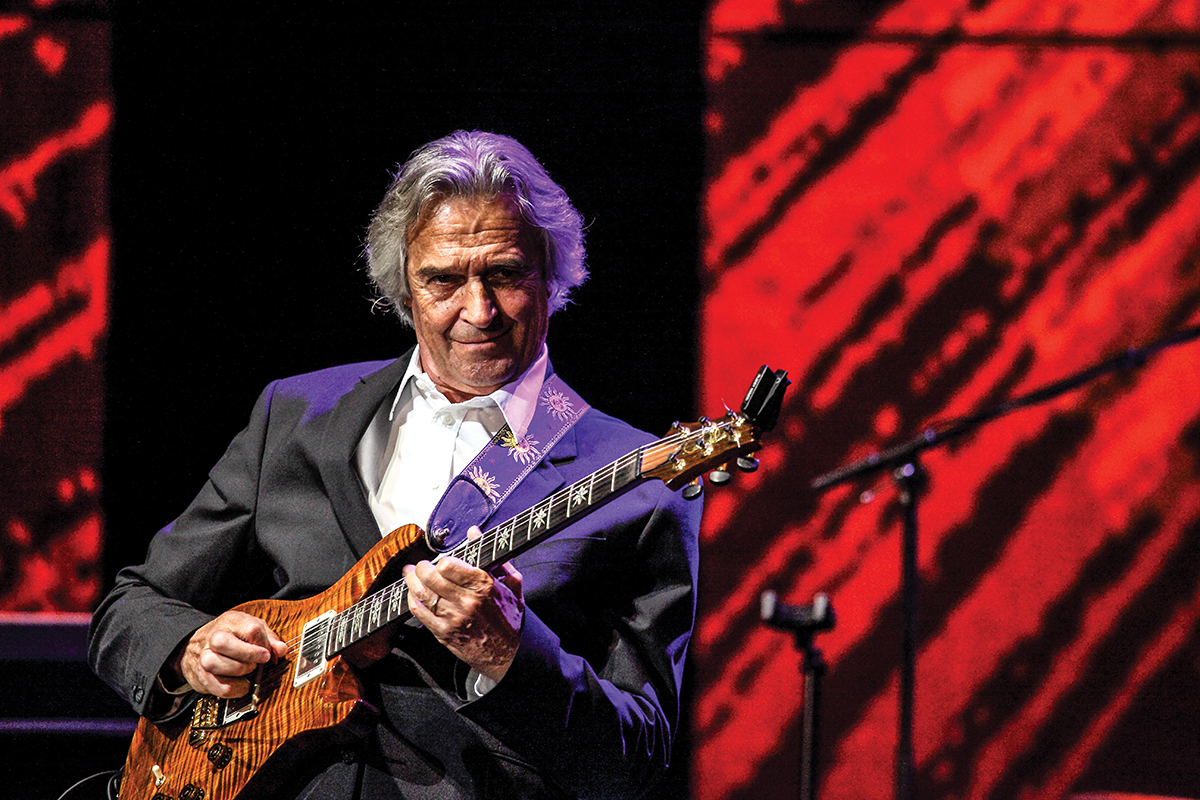
I was 11 when I first got my hands on a guitar,” says jazz maestro John McLaughlin. “It was love at first touch, it really was. But that first guitar was really crappy – an old acoustic banger, a really cheap imitation of a Dobro. My eldest brother brought it back from university one time [McLaughlin is one of five children]. But he very quickly got bored with it and, after about six months, gave it to one of my other brothers. He started playing and he got bored with it too, so it eventually landed in my arms.
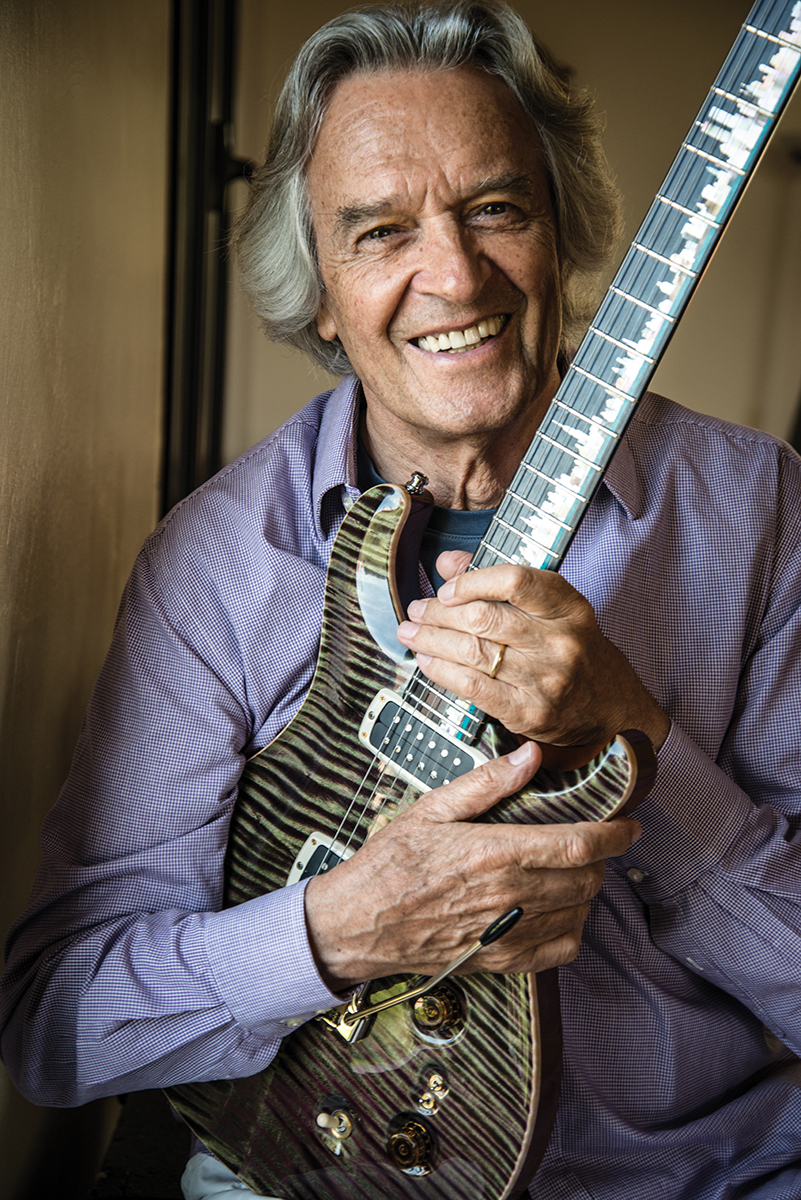
“My family could see that I was very enamoured with the guitar – somebody finally liked it enough to make their fingers bleed! Thinking about it, I was very lucky, because my older brothers were totally into the blues boom that was sweeping the UK in the early 50s, and they would bring home Big Bill Broonzy and Muddy Waters records, and then of course I would go out and get my own – Muddy Waters, Leadbelly, Mississippi Fred McDowell, Son House, etc…”
McLaughlin bought his first record in 1954: “I was 12 years old, and it was a Muddy Waters album. He was playing acoustic slide guitar, with Little Walter on harmonica. You remember – Forty Days And Forty Nights, Got My Mojo Working… great songs. Then one day, I must have been about 13 or 14, one of my brothers brought home a flamenco record and it just blew my mind. It was Sabicas, one of the greats. Then there was this guy, Alan Lomax, who had a programme on BBC Radio Two in the early 50s, where he was going between the Tennessee Mountains, the Appalachian Mountains and the depths of Pakistan, and recording everybody and their grandmother, in fact anybody who was any good. And one day he played some South Indian temple music that made my hair stand on end. Absolutely amazing.
It was played on a reed instrument called the nadaswaram, along with a fantastic tabla player. And that’s come right in the middle… the blues hit me, the flamenco hit me and the Indian music hit me and then… Django Reinhardt. That really twisted me and spun my head around, and when I heard Miles Davis and Coltrane that was it, my heart and soul.”
McLaughlin performing with The Mahavishnu Orchestra in Amsterdam in 1973
When McLaughlin was 15, he was just about able to scrape together enough money to buy a Hofner electric guitar. “I formed a band with a few school friends who were also jazz fans, and fortunately we had an enlightened music teacher who would invite us to play for the class, which was wonderful – even though it was a nerve-racking experience. But it was great because he didn’t care what kind of music we were playing, as long as we were playing music.”
By the time McLaughlin was 16 he was sneaking into his local pubs. “On a Saturday or Sunday night they’d have a jazz band and I’d pretend I was 18 and go over to the band and ask them if I could sit in,” he says. “I tell you, I got burnt so badly at the beginning… ‘okay young kid, let’s start off with Cherokee at a billion miles an hour and you take the first solo’. I’d go home with my tail between my legs! But what an experience.
I think I learned more from those jam sessions in the first few months when I was 16 than I would have with a year of practising. But after a few months, and you know I was really 0pestering these people, they would start to invite me. And eventually I got a gig.”
That same year, McLaughlin left home and got a job touring with Big Pete Deuchar and his Professors of Ragtime. “It was New Orleans jazz, but he was very open-minded,” says John. “I was trying to play like Miles and Coltrane, very badly of course, but he didn’t care. He just said ‘go for it’. So for about a year I toured with him, and eventually ended up in London, where I starved for a while, getting a gig here and a gig there.”
McLaughlin ultimately landed the guitar seat with Georgie Fame and the Blue Flames. “This would have been around 1961-62, the very early days,” he recalls, “and that was a fantastic situation to be in, because at the beginning of the 60s, rhythm & blues really started to hit, and then Motown came along and it was a revelation for everybody. That whole Detroit sound, black music coming into mainstream pop music… Georgie was singing King Pleasure, Mose Allison – it was really jazz-infused rhythm & blues. We were the ‘house band’ down at The Flamingo [in London’s Soho], where after midnight it became the ‘all-nighter’.
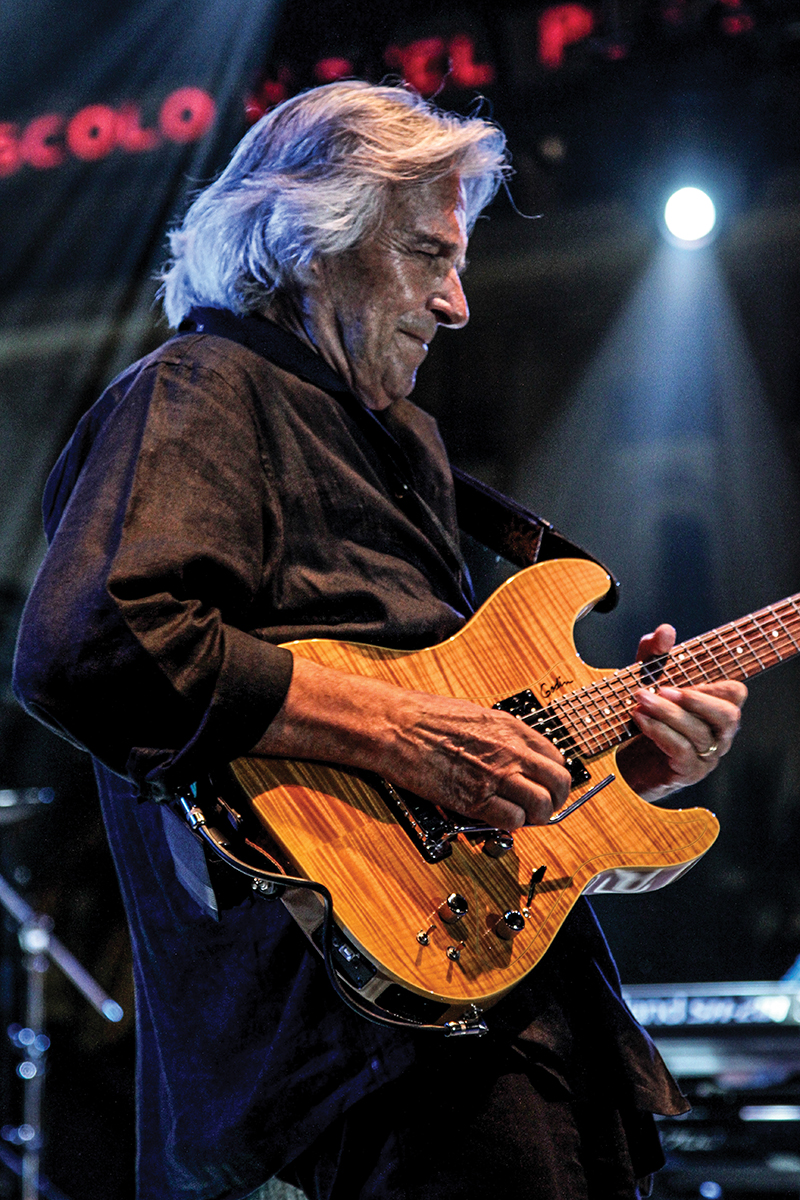
Sometimes at the weekend we’d do the evening show and then sometimes the ‘all-nighter’, it was brutal. Then there was the scene at The 100 Club with Alexis Korner and John Mayall – between The Flamingo and The 100 Club there was a lot of moving around. Everybody played with Alexis, he got everybody together. He was like fusion personified. Mick Jagger, Charlie Watts, Jack Bruce and Cyril Davies, they all either sang or played in Alexis’ band. And everyone got on well. Nobody thought about ‘do you belong in this band?’ – the whole musical scene was fantastic. Alexis loved 50s blues, but he always had jazzmen in his band. I jammed with Alexis I don’t know how many times… I’ll never forget, at that time I was playing a really great early 60s Telecaster… it was a beauty, a real beauty. Alexis was crazy about that guitar, so I sold it to him and that’s when I got my Gibson L-4.”
McLaughlin eventually left the Blue Flames to go with Jack Bruce, Ginger Baker and Graham Bond: “It was musically much more challenging with Graham. It was still very strong R&B, but if you take the R&B out of jazz, you don’t have very much jazz left, do you really? We were starving – making next to nothing. But The Graham Bond Organisation was a great little band.
Eventually, the GBO broke up, and then because I could read music, I started doing a lot of studio work alongside guys like Jimmy Page and John Paul Jones. Remember 1966-67 and all of those hits – Donovan, Sandie Shaw, Petula Clark, Tom Jones, Engelbert Humperdinck – it was the first time I had some money in my pocket! You know, Jimmy and I go back a long time. I was 18 when I met him and he must have been about 15. I was living in Surrey and we happened to be neighbours. I gave him guitar lessons!”
McLaughlin realised that for studio work he needed an acoustic flat top that had a more clear and singing tone than his L-4. “So I bought a Gibson Hummingbird. Actually, I also needed the money. I was broke, really broke, and somebody I knew said ‘I’ll give you a really good price for the Gibson L-4… ’cos, you know, you have to eat’. I did the studio work for about 18 months before I left. I felt I was dying. But after I left the session world I became poor again. I was running with several different bands, including a little trio with Danny Thompson, and playing with Brian Auger.”
McLaughlin playing his PRS Private Stock Violin guitar
McLaughlin was also hanging out and ‘kipping down’ at jazz bassist Dave Holland’s flat: “One day, Dave says ‘Bill Evans is coming into town’. I knew of Bill from Miles Davis’ Kind Of Blue album, and Jack DeJohnette’s playing drums and he wants to jam. Well, we went down there to Ronnie Scott’s in the afternoon – this must have been some time in the summer of ’68 – and we jammed with just Dave on upright bass and drums and guitar, and we had a fantastic time. What I didn’t realise, though, was that Jack had recorded it on one of these Mission Impossible tape recorders [laughs] with the little wheels going round and round.”
“Then, a few months later, I get a call from Dave. He said ‘I’ve got somebody here who wants to talk to you’. And it turns out Dave had Tony Williams [drummer] on the phone. Tony was on that Miles Davis In Europe record in ’64 when he was 18 years old – unbelievable. And Tony said ‘I’m putting a trio together and I want you to join’. He said: ‘Yeah, Jack DeJohnette played me a tape of you and Dave and I want you to come over to New York’, and I said, ‘wow, that’s fantastic. And God bless Ronnie Scott, because Ronnie helped organise a visa to get me over to America, which was difficult in those days.
So I arrived in New York right after my birthday in January 1969. Tony picked me up, I think I had about five pence in my pocket – old pence – I was so broke. And I remember, Dave loaned me $20. He was camping out in Mike and Randy Brecker’s apartment. So I moved into Randy and Mike’s apartment, which was okay, as they were on tour with Horace Silver.
“That night, I got to see Tony play and I got to meet Miles. Tony had to finish a week off at this club up in Harlem. I was in heaven, I tell you, I was in heaven. The next day, I got to meet Miles again and he invited me to come along to the In A Silent Way session. I mean, how lucky can you get? Unbelievable. Here I am playing with Tony’s band and I’m recording with Miles Davis! And eventually, of course, I started doing gigs with Miles.
When he was recording In A Silent Way, I could see he was at a transition point. He wanted more R&B – can you believe it? He was moving more towards Sly And The Family Stone and James Brown – like me, that’s what I was listening to in the 60s. Anyway, I’d passed the acid test on In A Silent Way, so Miles started to invite me to his house and always bring my guitar.
So by the time we did Bitches Brew, I knew him much better. He was an amazing human being and an amazing artist, too. He was so funny, he had this amazing sense of humour. When we recorded Bitches Brew, in my opinion Miles really didn’t know what he wanted, but he knew what he didn’t want.
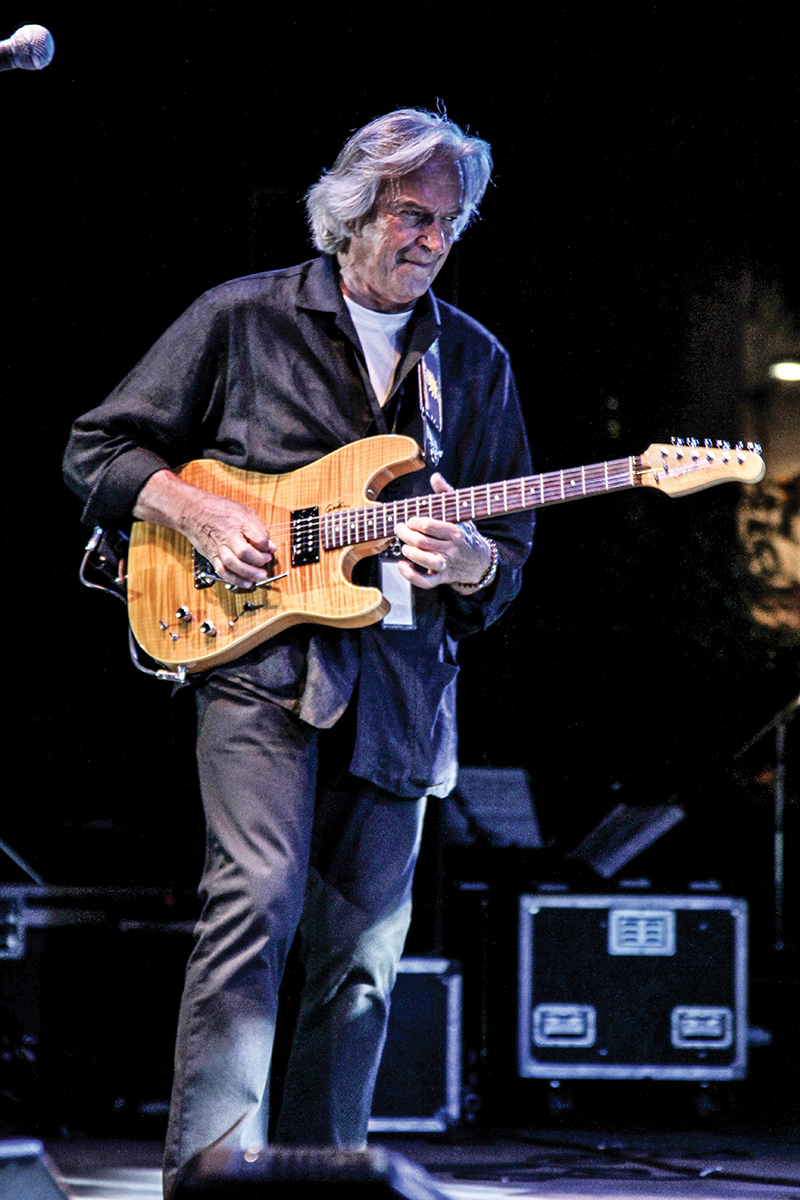
“The way he set up the sessions… he’d give a key and he’d sing a rhythm, just really simple. The drummer would start playing and the bass player would start playing, and we’d set up something and he’d kind of tweak it as we went along to the point where he really liked it and we’d hit a groove, then he’d start playing. He wanted more and more R&B, and he loved wah. You know, I got so much from Miles with him nudging me here and there.”
McLaughlin, however, was still playing with Tony Williams and famously wielding that double-neck axe. “I called Gibson and I said, ‘I understand you do a double-neck and I’d really like a double-neck’. Of course, there were no chorus pedals in those days, just amps and wah pedals, and that was it. And the 12-string was great for chords and arpeggios, and so they built me an SG double-neck and that was the guitar I had on my very first hit. You know, Tony was always encouraging me to write more and more music, ’cos he really liked what I wrote. I guess a big part of Mahavishnu music began developing with Tony Williams’ Lifetime.”
Then, in the fall of 1970, McLaughlin recalls he had just finished a gig near Boston with Miles at a club called Lenny’s On The Turnpike: “Hey, what a name! And Miles turned to me and he said, ‘it’s time you formed your own band John’.
“I had to do it, if just to justify his belief in me. Ironically, I got a call about a month later from the bass player, Miroslav Vitous – he and I were very close. He called me and said ‘I’m forming a band with Wayne Shorter and Joe Zawinul, called Weather Report, and we’d love you to be in it’. I thought, ‘wow, that’s great, but I’m under orders!’ And of course I had to tell him ‘Miles has told me to form my own band, so I’m doing it!’”
Early the following year, the Mahavishnu Orchestra was born, the legacy of which is still alive today in the form of The 4th Dimension, where McLaughlin continues to expand his creative horizons and explore new musical pathways. Listen to his recent album Black Light for some serious enlightenment.

